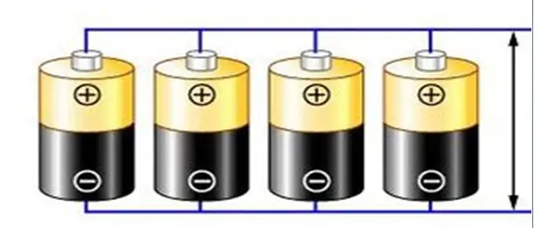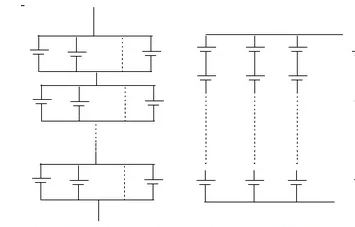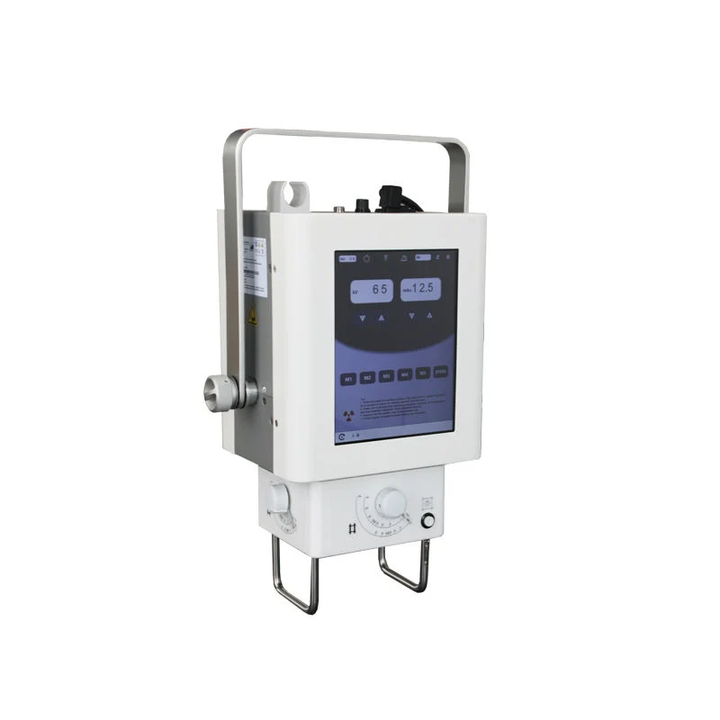Influence of lithium-ion batteries in series and parallel on the
performance of battery packs
Due to the limited voltage and capacity of the single battery, in order to
meet the high voltage and large capacity requirements of electrical equipment
and energy storage systems, lithium-ion batteries are usually used in series,
parallel or a combination of series and parallel.
However, inconsistencies will inevitably occur in the manufacturing process
of lithium-ion batteries, and the degree of inconsistency will be gradually
amplified with the prolongation of use time and the increase of cycle life.
Typical parameters of lithium-ion batteries, such as AC internal
resistance, DC internal resistance, voltage and other parameters will also be
different under different states of charge. Under the barrel effect, individual
bad cells will lead to the failure of the entire energy storage system.
Therefore, the series and parallel modes of lithium-ion batteries have a huge
impact on the performance of the battery system.
SES Power has rich experience in the R&D and production of customized
lithium battery packs. 48V200Ah, 72V100Ah, 120V80AH, 12V30Ah, 12V50Ah, 12V60Ah
starting batteries with high-performance rate lithium batteries (the maximum
peak current can reach 1500A), etc. In the process of making these products, we
always connect the cells in series and parallel. Let SES Power explain to you
the relevant knowledge of series and parallel connection of lithium
batteries.
A: Parallel:
In the actual parallel application of lithium-ion batteries, the parallel
branch is affected by the consistency of the battery, and the current imbalance
will occur during operation. The current of the parallel branch is also affected
by the parameters of this branch and other branches. influences.

When lithium-ion batteries are grouped in parallel, the DC internal
resistance and line impedance of the battery (the farther from the output end,
the greater the impedance) will cause the actual current through each cell when
the capacity and initial state of the single battery are the same. Not the same,
especially in the state of high current. This will eventually cause individual
cells to be in a state of current that is much larger than that of other cells
(even if the terminal voltage is constant, the current fluctuation time is very
short), and eventually individual cells are more prone to decay than other
cells.
B: Concatenation:
The equipment or energy storage system needs a certain voltage to work, and
the voltage of a single battery cannot meet the requirements of the equipment
and system. At this time, multiple cells need to be connected in series to
achieve the rated working voltage.
The platform voltage of lithium-ion batteries varies according to the
positive and negative electrode materials. For example, for lithium-ion
batteries with graphite as the negative electrode material, when lithium iron
phosphate is used as the positive electrode material, the platform voltage is
3.2V; when the positive electrode material is selected from ternary materials,
The platform voltage is 3.7V; when the negative electrode material becomes
lithium titanate, the platform voltage will change with the change of the
positive electrode material.

Affected by the inconsistency in the production and manufacturing process
of single cells, the capacity and internal resistance of the single cells will
eventually affect the charge-discharge curve of the cells because the current
flowing through the cells is the same when the cells are used in series. When
each cell is in a different position in the battery pack, temperature will
become the biggest factor affecting the cells in series.
The cell in the middle of the battery pack needs to be dissipated to the
peripheral cells for heat dissipation, so its temperature is much higher than
that of the peripheral cells, so it is easier to polarize and attenuate.
C: series-parallel hybrid:
Single cells can be connected in series to meet the voltage requirements,
and parallel to meet the capacity requirements. The series-parallel connection
often exists at the same time.
The typical series-parallel method of battery packs includes
parallel-connection first, series-connection first, and series-parallel
connection first. Of course, there are also more complex topologies of
series-parallel hybrid. The power usage usually adopts the method of first
parallel and then series, and the energy storage system generally adopts the
connection method of first series and then parallel.
The battery topology structure of series first and then parallel is
conducive to the detection and management of each single battery of the system.
In the series-before-parallel connection mode, the more the number of series
batteries in the parallel branch, the closer the battery parameters of the whole
branch, such as internal resistance and polarization, are. At this time, the
capacity difference of the parallel branch and the initial SOC difference become
the main factors that cause the parallel current unbalance.
However, referring to the information on the grouping method of the
relevant power battery packs, from the perspective of the reliability of the
battery pack connection, the trend of voltage inconsistency, and the impact of
the battery pack performance, the parallel connection method is better than the
series connection method.
In terms of system connection reliability, the first parallel and then the
series is higher than the single battery, while the reliability of the first
series and then the parallel is lower than that of the single battery; in terms
of battery voltage inconsistency, the voltage distribution of the group mode of
the first parallel and then the series is more concentrated. There is no battery
with too low voltage, and the battery pack using the series-first-parallel
grouping method is generally low in voltage and has a large voltage distribution
range.
It can be seen from the above that the series-first-parallel and the
first-parallel-to-series have their own advantages and disadvantages. Under
different application conditions, the appropriate grouping method should be
selected according to the usage, battery system capacity, charging and
discharging conditions, etc.




































